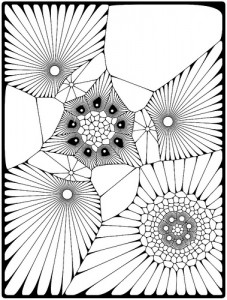 As a freelance writer, I spend a lot of my time in contented isolation. But lately I’ve been appreciating a particular kind of social network. It’s not my intimate circle of family and friends, wonderful though that is. It’s not the choppy, wide-open seas of Twitter and Facebook, though those have their place as well. The kind of network I’m talking about is looser than a family, more trustworthy than any real or virtual crowd, and more or less egalitarian. I think of it as a tribe.
As a freelance writer, I spend a lot of my time in contented isolation. But lately I’ve been appreciating a particular kind of social network. It’s not my intimate circle of family and friends, wonderful though that is. It’s not the choppy, wide-open seas of Twitter and Facebook, though those have their place as well. The kind of network I’m talking about is looser than a family, more trustworthy than any real or virtual crowd, and more or less egalitarian. I think of it as a tribe.
Two of my tribes have been busy in recent weeks: I just co-edited a book written by more than 30 friends, all members of a network of science writers called SciLance. I’ve also connected and reconnected with alums of my alma mater, Reed College, through the Switchboard, a student-built network where Reedies of all ages ask for and offer internships, career advice, spare rooms and so on.
Dunbar’s number suggests that the maximum size of a stable social network is about 150 people. While SciLance has 30-odd members, the Switchboard is open to tens of thousands. Yet both have managed to lure notoriously independent, cocktail-party-averse types into enthusiastic daily communication with their fellow humans. (I once got a college-reunion pitch that began, “You may think you’re the only person who didn’t know a soul at Reed …”) In both cases, the results are surprisingly powerful, helping everyone do better than they would have on their own.
What makes these tribes work?
The founder of SciLance, Kendall Powell, lays out our history here, along with a lot of characteristically wise and helpful advice for aspiring tribalists. I’m sure sociologists have plenty of thoughts on the subject, too — do weigh in. But in my book, there are five basic steps to building any peaceable tribe:
Start with a common experience. Whether it’s time on the same college Frisbee fields or shared duty in the trenches of science writing, members have to have something in common, right from the start.
Add a reason to trust one another (and neighboring tribes, too). Common experience is important, but it’s not enough on its own to get an honest conversation going. In SciLance, all the members are not only science writers but also either a friend or a friend of a friend of the founder. To participate in the Switchboard site, you need to know a basic fact about the Reed Humanities 110 syllabus — a shibboleth that doesn’t provide much actual security, but does create a cozy secret-clubhouse atmosphere. These entrance requirements might sound like those of snobby fraternities, and it’s true that some level of exclusivity does help build trust. The beauty of tribes, though, is that they’re infinitely replicable: with the right ingredients, you can start one of your own anytime, anywhere. SciLance is connected with several similar groups of science writers, a leaf-and-vine pattern that maintains intimacy while benefiting from a larger pool of knowledge.
Add reasons to keep trusting one another. On the Switchboard, stories about new jobs and wonderful homestays have encouraged more and more students and alums to ask for and offer help. On SciLance, years of unbroken confidentiality have had the same effect. Both networks are strong enough, and old enough, to survive the occasional misunderstanding — but the good has to continue to far outweigh the bad.
Promote mutualism by example. Tribes are most effective when members give roughly as much as they take. It doesn’t really matter if the giving is self-interested — advice offered in hopes of getting some in return — or truly altruistic or both. Someone will benefit regardless, and he or she will be inspired to make the next offer.
Stir some reality into your virtual reality. SciLance and the Switchboard both began online, but members either already knew each other offline, or knew there was a good chance they’d meet someday. That makes a big difference: The possibility of an in-person comeuppance makes everyone behave better online, and offline bonding vastly increases online trust.
Of course, neither of these groups has invented anything — humans started out in tribes, and have always had them in some form. But both have figured out how to use our tribal tendencies for good, and even a feral freelance writer can see the beauty in that.
Top graphic by Flickr user Quasimondo.
I enjoyed the article a lot, but what I really want to inquire about is the beautiful image. Is that your own work, and is it possible to get permission to use it elsewhere?
Hi Pat, just go to the Flickr link at the bottom of the post to download the image – it’s licensed under Creative Commons and so is available for non-commercial use.